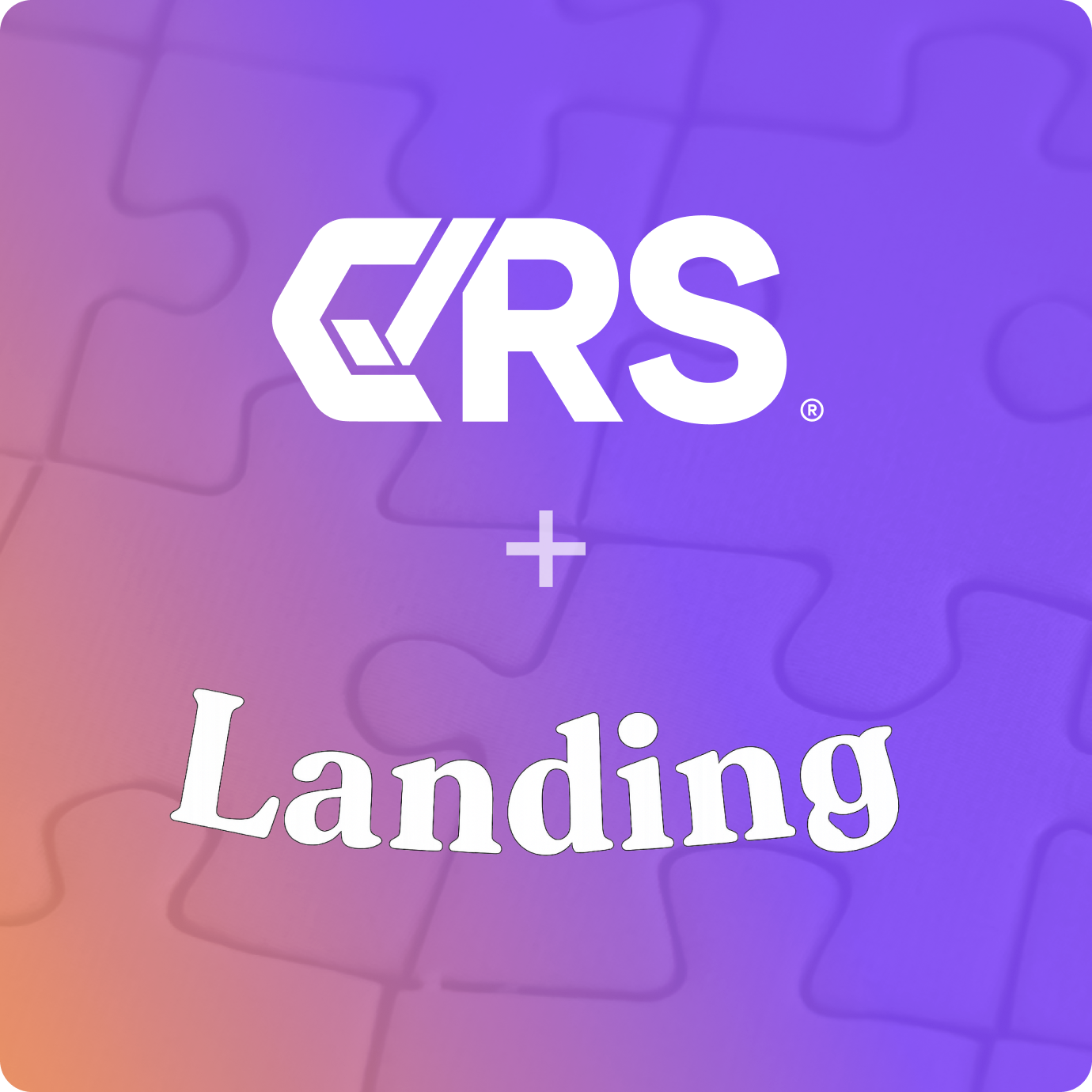Integrating a credit data API into your financial services platform is a strategic initiative that demands careful planning, technical precision, and regulatory awareness. Whether you’re a fintech startup launching consumer lending or an established institution modernizing legacy systems, the path from vendor selection to production deployment typically spans weeks to months. This guide walks through seven essential steps that credit, product, risk, and technology leaders should follow to ensure a smooth, compliant, and scalable go-live. By understanding each phase—from defining your integration strategy to monitoring post-launch performance—you’ll minimize implementation friction, accelerate time-to-market, and build a foundation for long-term operational success.
Define Your API Integration Strategy
A well-defined API integration strategy serves as the blueprint for every technical decision, compliance checkpoint, and resource allocation that follows. Without clear direction at the outset, teams risk scope creep, misaligned expectations, and costly rework during later stages of implementation.
Start by identifying the specific business outcomes your credit data API must support. Are you underwriting personal loans, verifying income for mortgage applications, or monitoring credit risk across a portfolio? Each use case dictates different data attributes, refresh frequencies, and decisioning logic. Articulate these requirements in a concise integration brief that product, risk, and engineering teams can reference throughout the project lifecycle.
Next, assess your current technology landscape. Catalog existing systems—core banking platforms, loan origination software, customer relationship management tools—that will consume or supply data to the API. Understanding these touchpoints early helps you design data flows that minimize latency and avoid redundant transformations. CRS’s all-in-one credit and compliance platform consolidates multiple credit bureau connections and compliance workflows into a single integration, streamlining your go-live timeline.
Establish clear success metrics before writing a single line of code. Define acceptable response times, uptime thresholds, and data accuracy benchmarks. Quantify the business impact you expect—whether that involves reducing manual underwriting hours, improving approval rates, or expanding into new markets. These metrics will guide testing priorities and provide objective criteria for your production readiness review.
Finally, align stakeholders across departments. Credit risk teams need confidence in data quality and model performance. Compliance officers must verify adherence to Fair Credit Reporting Act requirements and emerging regulations like the CFPB’s Section 1071 rule for small business lending data. Engineering teams require realistic timelines and resource commitments. A cross-functional kickoff meeting that documents roles, responsibilities, and decision-making authority prevents bottlenecks and ensures everyone understands how the API integration advances broader organizational goals.
Select the Right Credit Data API Provider
Choosing the right API provider is one of the most consequential decisions in your integration journey. The provider’s data coverage, compliance posture, technical documentation, and support model directly influence both your speed to market and long-term operational stability.
Evaluate data breadth and depth first. Leading credit data APIs aggregate information from multiple bureaus—Equifax, Experian, TransUnion—and alternative data sources such as bank transaction history and utility payment records. Broader coverage enables more accurate risk assessments and expands your addressable customer base, particularly for thin-file or credit-invisible applicants. Verify that the provider refreshes data frequently enough to support your decisioning cadence, whether that’s real-time for point-of-sale financing or daily batch updates for portfolio monitoring.
Compliance credentials are non-negotiable. Confirm that your prospective provider maintains SOC 2 Type II certification, demonstrating robust controls over data security, availability, and confidentiality. Review their permissible purpose validation workflows to ensure they help you meet Fair Credit Reporting Act obligations. Providers with built-in adverse action letter generation, dispute management, and audit trail capabilities reduce the compliance burden on your internal teams. As the CFPB’s Section 1071 rule takes effect, providers that automate demographic data collection and reporting for small business lending will offer a significant advantage.
Technical quality matters as much as data quality. Examine the provider’s API documentation for clarity, completeness, and code examples in your preferred programming languages. Well-documented endpoints, error codes, and rate limits accelerate development and reduce support tickets. Test the sandbox environment to confirm it mirrors production behavior and offers realistic test data scenarios. Providers that supply dedicated developer portals with interactive API explorers and webhook simulators streamline both initial integration and ongoing maintenance.
Consider the provider’s support and partnership model. Do they offer a dedicated implementation manager, or will you rely on generic support queues? How quickly do they respond to production incidents? What SLAs govern uptime and data freshness? CRS’s consultative approach combines white-glove onboarding with transparent pricing and proactive guidance, enabling teams to navigate both technical hurdles and regulatory nuances.
Design Your Data Architecture and Workflows
A thoughtfully designed data architecture ensures your credit data API integration scales efficiently, maintains data integrity, and supports evolving business requirements without requiring costly refactoring.
Map out your end-to-end data flow before building any integrations. Identify each system that will request credit data, consume API responses, or trigger downstream actions based on credit decisions. Document the sequence: a loan application form captures customer consent, your backend service calls the credit API, the response populates underwriting models, and decisioning logic routes approvals to fulfillment systems while rejections trigger adverse action processes. Visualizing this flow helps you spot potential failure points and design appropriate error handling.
Choose an integration pattern that balances simplicity and flexibility. Synchronous API calls work well for real-time underwriting scenarios where users expect instant decisions. Asynchronous patterns using webhooks or message queues suit batch processing, portfolio reviews, or workflows where slight delays are acceptable. Hybrid approaches—initiating a credit pull synchronously but processing certain data enrichment steps asynchronously—can optimize both user experience and system performance.
Implement robust data transformation and validation logic. Credit data APIs return structured JSON or XML payloads containing dozens of fields, from tradeline details to public records. Your application must parse these responses, validate required fields, handle missing data gracefully, and transform values into formats your internal systems expect. Build reusable data mappers and validation schemas to ensure consistency across multiple API endpoints or future provider migrations.
Plan for data storage and retention carefully. Regulations require you to retain credit report copies for compliance and dispute resolution purposes, but indefinite storage increases security risk and storage costs. Define retention policies that satisfy legal requirements—typically 25 months for consumer reports under FCRA—while minimizing exposure. Encrypt sensitive data at rest and in transit, and implement access controls that limit who can view full credit reports versus anonymized summaries.
Design workflows that respect permissible purpose requirements. Every credit data request must align with a legally permissible purpose such as credit underwriting, account review, or fraud prevention. Implement programmatic checks that verify consent, log the business justification for each API call, and prevent unauthorized access. These controls protect your organization from regulatory penalties and demonstrate good-faith compliance during audits.
Build and Test Your Integration in Sandbox
Thorough sandbox testing is the cornerstone of a smooth production launch. A robust test phase uncovers integration bugs, validates business logic, and builds team confidence before real customer data and financial decisions enter the system.
Start by familiarizing yourself with the provider’s sandbox environment. Most credit data API vendors offer test endpoints that return synthetic data mimicking real credit profiles without triggering actual bureau inquiries or incurring costs. Review the available test personas—high credit scores, recent delinquencies, thin files, frozen credit reports—and map them to your use cases. Stripe’s testing approach demonstrates how well-designed test data accelerates development by letting engineers simulate edge cases without waiting for real-world scenarios to appear.
Develop a comprehensive test plan covering functional, performance, and security dimensions. Functional tests verify that your application correctly parses API responses, applies underwriting rules, and routes decisions appropriately. Performance tests measure response times under load, ensuring your system can handle peak application volumes without degrading user experience. Security tests confirm that API credentials are stored securely, data transmission uses TLS encryption, and access logs capture all credit data requests.
Automate your testing wherever possible. Write unit tests for data transformation functions, integration tests for API call sequences, and end-to-end tests for complete user workflows. Automated test suites catch regressions quickly when you modify code or upgrade API versions. Incorporate these tests into your continuous integration pipeline so every code commit triggers a validation cycle, preventing broken builds from reaching production.
Simulate error conditions deliberately. Test how your application behaves when the API returns rate limit errors, timeout exceptions, or malformed responses. Verify that retry logic implements exponential backoff to avoid overwhelming the provider’s servers. Confirm that user-facing error messages are helpful without exposing sensitive technical details. Understanding the distinction between test mode and live mode helps teams avoid the costly mistake of mixing test and production configurations.
Conduct user acceptance testing with stakeholders from credit risk, compliance, and operations teams. Walk through realistic application scenarios, review credit report displays, and validate that adverse action workflows generate compliant notices. Collect feedback on user interface clarity, decision transparency, and operational efficiency. Addressing these concerns in sandbox prevents frustrating discoveries after launch.
Ensure Compliance and Security Readiness
Regulatory compliance and data security are foundational requirements that protect your customers, your business, and your reputation. Failing to address these dimensions before go-live exposes your organization to regulatory penalties, data breaches, and erosion of customer trust.
Conduct a thorough Fair Credit Reporting Act compliance review. Verify that your application collects clear, conspicuous consumer consent before pulling credit reports. Confirm that your permissible purpose documentation is complete and accessible for audits. Implement adverse action workflows that automatically generate compliant notices when you deny credit or offer less favorable terms based on credit data. These notices must include specific reasons for the decision, the credit bureau’s contact information, and the consumer’s right to dispute inaccurate information.
Address data security with a defense-in-depth approach. Encrypt credit data both in transit using TLS 1.2 or higher and at rest using strong encryption algorithms. Implement role-based access controls that limit credit report access to authorized personnel with legitimate business needs. Enable multi-factor authentication for any system or user account that can retrieve credit data. Conduct regular vulnerability scans and penetration tests to identify and remediate security weaknesses before attackers exploit them.
Establish comprehensive audit logging and monitoring. Capture every credit data API request with timestamps, user identities, permissible purposes, and outcomes. Store these logs in tamper-evident systems that support forensic analysis during compliance audits or security investigations. Configure real-time alerts for suspicious patterns such as bulk credit pulls, access outside business hours, or repeated queries for the same consumer.
Prepare for regulatory examinations by documenting your compliance program. Maintain written policies covering permissible purpose validation, data retention, consumer dispute handling, and vendor management. Train employees who interact with credit data on FCRA requirements and your organization’s specific procedures. Schedule periodic compliance audits to identify gaps and demonstrate ongoing diligence. Regulators view proactive compliance programs more favorably than reactive scrambles after violations surface.
Review emerging regulations that may affect your integration. The CFPB’s Section 1071 rule requires financial institutions to collect and report demographic data for small business credit applications, including race, ethnicity, and sex of business owners. If your API integration supports small business lending, ensure your data collection workflows and reporting capabilities align with these requirements. Staying ahead of regulatory changes prevents costly remediation projects and positions your organization as a responsible market participant.
Execute a Phased Production Rollout
A phased rollout strategy mitigates risk by exposing your credit data API integration to real-world conditions gradually, allowing you to detect and resolve issues before they affect your entire customer base.
Begin with an internal pilot involving a small group of users or a limited geographic market. Route a controlled percentage of production traffic through your new API integration while maintaining your legacy system as a fallback. Monitor key metrics—API response times, error rates, decision accuracy—closely during this phase. Compare outcomes between the new integration and your existing process to validate that credit decisions remain consistent and compliant.
Expand to a broader beta group once internal testing confirms stability. Select a representative sample of customers across different credit profiles, application types, and use cases. Collect qualitative feedback from customer service teams and loan officers who interact with the system daily. Are credit reports displaying correctly? Do underwriting workflows feel intuitive? Are adverse action notices generating as expected? Address usability issues and edge cases before scaling further.
Implement feature flags and circuit breakers to control rollout pace and protect against failures. Feature flags let you enable the credit API integration for specific customer segments or application channels without deploying new code. If issues arise, you can instantly revert to the previous system by toggling a flag. Circuit breakers automatically halt API calls and fall back to alternative data sources when error rates exceed predefined thresholds, preventing cascading failures that could disrupt your entire lending operation.
Communicate transparently with stakeholders throughout the rollout. Provide regular status updates to executive leadership, highlighting progress, metrics, and any issues encountered. Keep credit risk and compliance teams informed about decision trends and data quality observations. Notify customer support teams about potential changes to application workflows or troubleshooting procedures. Proactive communication builds confidence and ensures rapid response when intervention is needed.
Plan for a gradual traffic ramp-up rather than an abrupt cutover. Increase the percentage of production traffic routed through your credit API integration incrementally—perhaps 10% in week one, 25% in week two, 50% in week three, and so on. This approach gives you time to observe performance under increasing load, optimize configurations, and build operational muscle memory. Full production adoption should occur only after your team has confidently handled multiple weeks of real-world traffic without significant incidents.
Monitor Performance and Optimize Continuously
Launching your credit data API integration is not the finish line—it’s the starting point for ongoing performance monitoring, optimization, and enhancement. Continuous improvement ensures your integration delivers sustained business value as your organization scales and market conditions evolve.
Establish a comprehensive monitoring dashboard that tracks both technical and business metrics. Technical metrics include API response times, error rates, timeout frequencies, and rate limit consumption. Business metrics encompass application approval rates, credit decision consistency, adverse action notice volume, and customer satisfaction scores. Correlating these dimensions helps you distinguish between technical issues requiring engineering fixes and business logic adjustments needing credit risk input.
Set up proactive alerting for anomalies and threshold breaches. Configure alerts when API error rates exceed normal baselines, response times degrade beyond acceptable limits, or credit decision patterns shift unexpectedly. Integrate these alerts with your incident management system so on-call engineers and credit risk analysts can respond quickly. Early detection of issues—whether a provider outage, a configuration error, or a data quality problem—minimizes customer impact and preserves your reputation.
Conduct regular performance reviews with your API provider. Discuss observed latency patterns, data freshness, and any recurring errors. Collaborate on optimization opportunities such as caching strategies, request batching, or webhook implementations that reduce polling overhead. Strong provider partnerships yield insights into upcoming feature releases, best practices from other customers, and early warning about maintenance windows or platform changes.
Analyze credit decision outcomes to validate model performance and data quality. Compare credit scores and tradeline data from your API integration against historical benchmarks or alternative data sources. Investigate discrepancies between expected and actual approval rates, particularly across different customer segments or credit profiles. If certain populations experience disproportionate denials, assess whether data coverage gaps or model biases require attention. Continuous monitoring helps you detect and address fair lending risks before they escalate into regulatory concerns.
Iterate on your integration based on operational learnings and evolving business needs. As your lending products expand or customer base diversifies, you may need additional data attributes, faster refresh cycles, or new decisioning workflows. Prioritize enhancements that deliver measurable business impact—reducing underwriting time, improving approval rates for qualified applicants, or automating manual compliance tasks. Treat your credit data API integration as a living system that adapts alongside your organization’s growth and strategic priorities.
Conclusion
Going live with a credit data API is a multifaceted journey that demands strategic planning, technical rigor, regulatory diligence, and operational discipline. By following these seven essential steps—defining your integration strategy, selecting the right provider, designing robust data architecture, testing thoroughly in sandbox, ensuring compliance and security readiness, executing a phased rollout, and monitoring continuously—you position your organization for a successful launch and sustained competitive advantage.
The timeline from initial planning to full production typically ranges from several weeks for straightforward integrations to several months for complex, multi-system implementations. Partnering with a provider like CRS that combines comprehensive credit data access, built-in compliance workflows, and consultative support can significantly accelerate this timeline while reducing implementation risk.
Remember that your credit data API integration is not a one-time project but an ongoing capability that evolves with your business. Invest in monitoring, optimization, and continuous improvement to maximize the value of your integration and maintain the trust of your customers, regulators, and stakeholders. With the right approach, your credit data API becomes a strategic asset that powers faster decisions, better risk management, and sustainable growth in an increasingly competitive financial services landscape.










